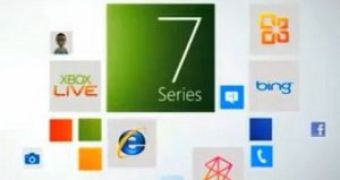A series of new details on the upcoming Windows Phone 7 mobile operating system from Microsoft have just emerged into the wild, via a leaked Microsoft Windows Phone 7 Architecture Guide and a tutorial on how to compile the OS. Among the new info available for the platform, we can count that the handset will be linked with user's Windows Live ID, and that one will have to enter their credentials and accept the EULA for the service.
The leaked documents emerged on Tweakers.net, showing that the “hardware will be tied to a Genuine Windows Phone certificate else the ID will not be accepted,” as WMPoweruser notes. “A Windows Live ID will be needed for contact synchronization, to access marketplace and to access Microsoft’s services. In practice this means the device will be more or less useless without, but also that potentially each phone will be directly tied to one person, with may alarm privacy advocates somewhat,” a recent article on the news site reads.
Among the other details unveiled now, we can count the fact that Microsoft is set to be actively involved in the development of handsets, and that OEM ROM updates will be delivered by the Redmond-based software giant itself. Users will be notified when updates are available, and they can download them either over the air or via a computer. On the other hand, it seems that Direct3D drivers will come from OEMs, which might not be seen as a good idea in the end.
The user experience will be controlled by Microsoft, as mobile phone makers will have a limited ability to customize the devices. OEM applications are allowed, but only up to six, it seems, with no trialware included, and with a limitation of only 60 MB of memory available for them. Bing will be the default search engine on the upcoming Windows Mobile 7 handsets, though OEMs might have the possibility to change it in Internet Explorer only.
“Windows Phone 7 devices will use Microsoft Unified Storage System for user files, meaning applications will not be able to distinguish between files on internal storage and main memory. This also means if the user removes the memory card the smartphone will only be able to make emergency phone calls, but nothing else,” WMPoweruser concludes.

 14 DAY TRIAL //
14 DAY TRIAL //